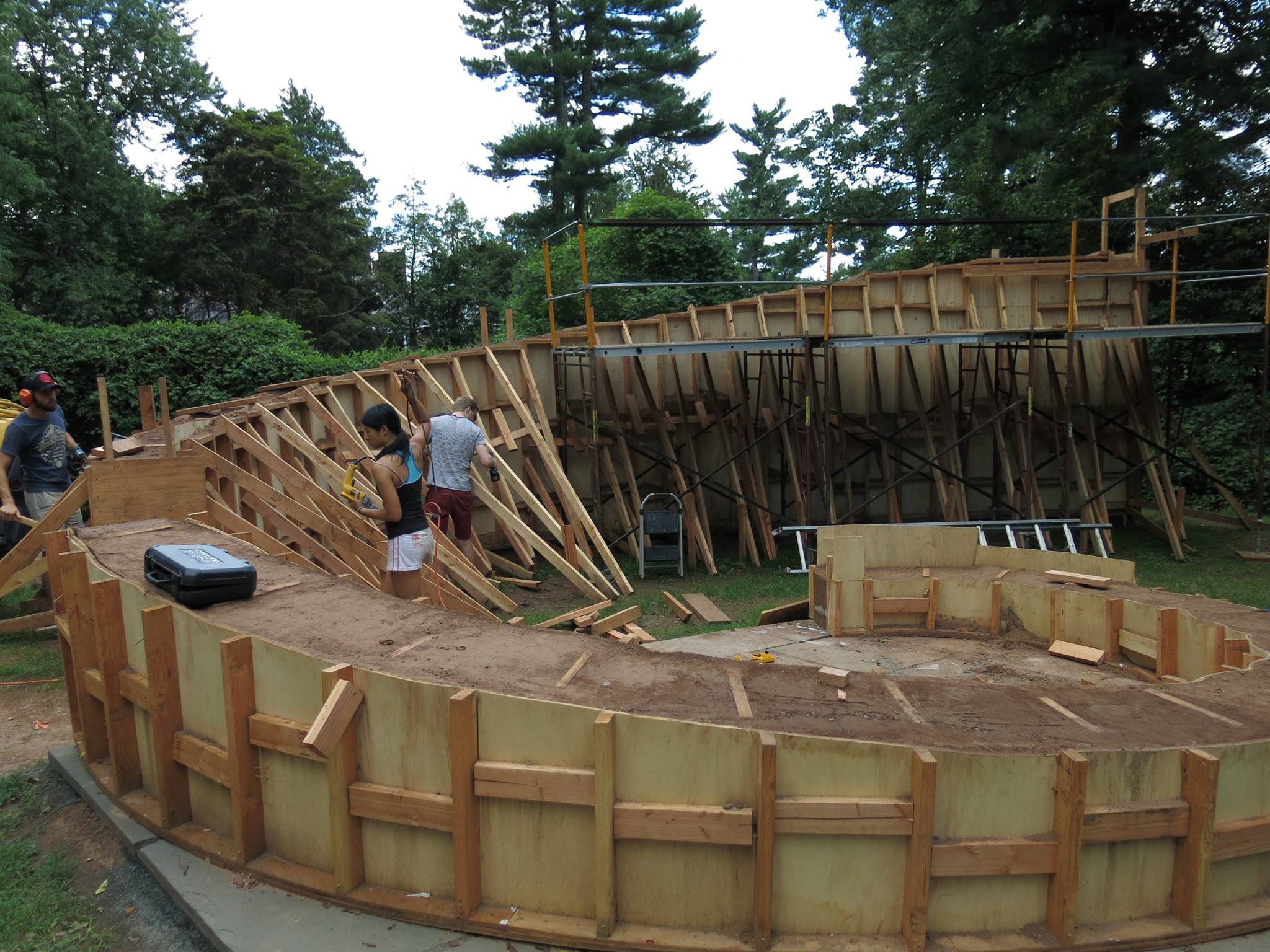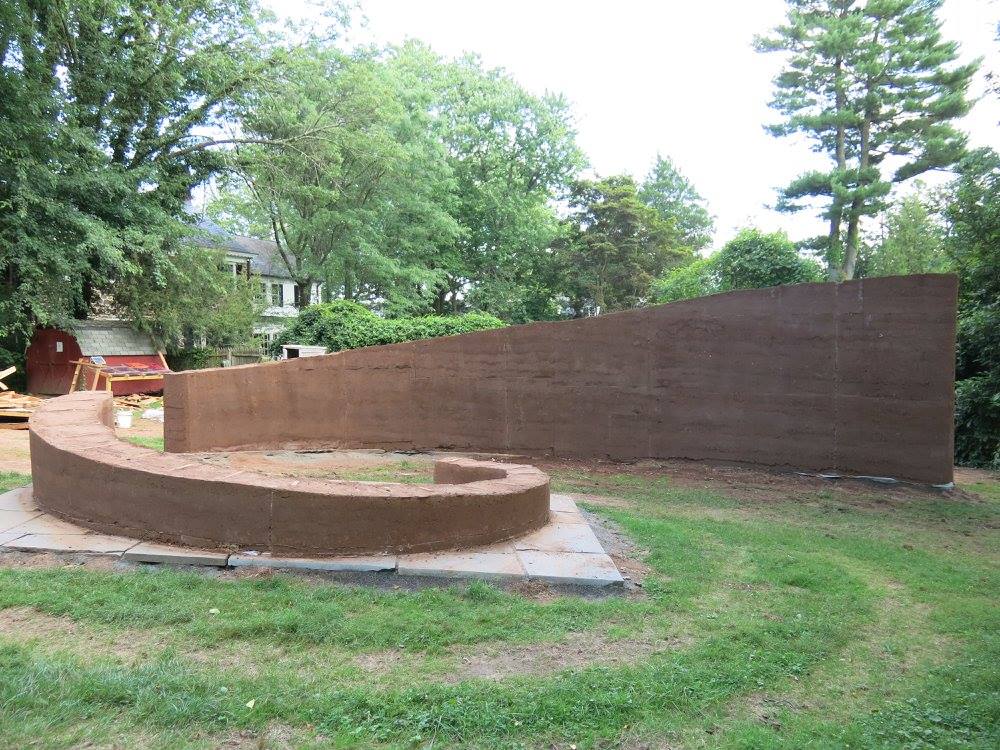Building an Earthen Spiral in Forbes Garden
Amber Lin ‘19

Rammed earth is a uniquely sustainable, beautiful building material - and completely foreign to most people. What is it? Everyday soil, the kind in your backyard, is mixed with some water, and then poured into formwork, usually made of wood. The soil is compressed into a dense layer. Repeat the process, layer by layer, and you can build walls, houses, and even a swirling gazebo in your university’s organic garden for community members to enjoy. The result is also a construction material with near zero CO2 emissions in production, transport, assembly and recycling, and one that offers significant energy savings in heating and cooling due to its insulating properties.
Prevalent for thousands of years (think Great Wall of China) and common in developing areas for its simplicity, rammed earth went out of use with the rise of concrete and steel in the 20th century. Stigmas against earth building grew as people began to view it as a poor man’s construction material. However, with growing concerns for sustainability, rammed earth construction is now being reevaluated as a modern construction material. Concrete and steel, while incredibly strong materials, also have incredibly high embodied energies, and require heating to temperatures of 1500-1600 degrees Celcius in their production processes. Replacing traditional materials with non-traditional, or in a way, more traditional materials, could be especially impactful in energy savings for today’s building industry, which accounts for nearly half of the energy consumption in the U.S.

This summer I was a part of a team that designed and constructed a rammed earth spiral in Forbes Garden. Part of the goal is science – we want to show that this structure will hold up brilliantly in New Jersey’s unforgiving seasonal climate. Part of the goal is practicality – the structure can serve to transform the Forbes Garden into a more usable space for the Princeton community, where students can have class, a movie night, or just a place to relax and study. But perhaps the most important goal, though, is building awareness about structures, sustainability, and service.
While I’ve spent a majority of my days drawing templates on Rhino (an architectural modeling software), screwing together 2 by 4s, or mixing just the right soil, lime, and water ratio for ramming, the other part of my internship is service based, finding ways to make our structure more accessible to the Princeton community. I’m funded through PACE Center’s Bogle Fellows program, along with 8 other students in the Class of 2019. Our internships are vastly different – education reform, healthcare analytics, and beekeeping, to name a few. But at the heart of each internship is service, working to benefit some community in a specific way. My project has so far lent itself to volunteer events and service discussions with Princeton students, and workshops with local schools and camps. Children in programs at the Laurel School and the Princeton YMCA have come to the garden for a few hours and practice making their own rammed earth sample, and sometimes will also spend some time learning about the organic garden with Forbes Garden managers.
Moving forward, I’ll be starting an independent research project in the fall on designing and implementing an environmental sensor system for the rammed earth structures to compare different erosion protection methods. I’ll also keep working on advertising the garden as the newest study space on campus and planning service events with the Princeton community. Our lab will be planning an opening event at the Forbes Garden in the fall – so keep your eyes and ears open!
